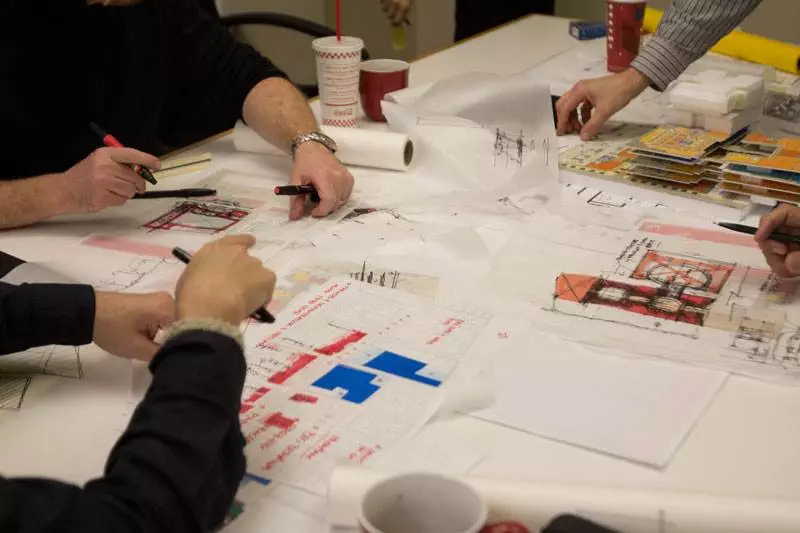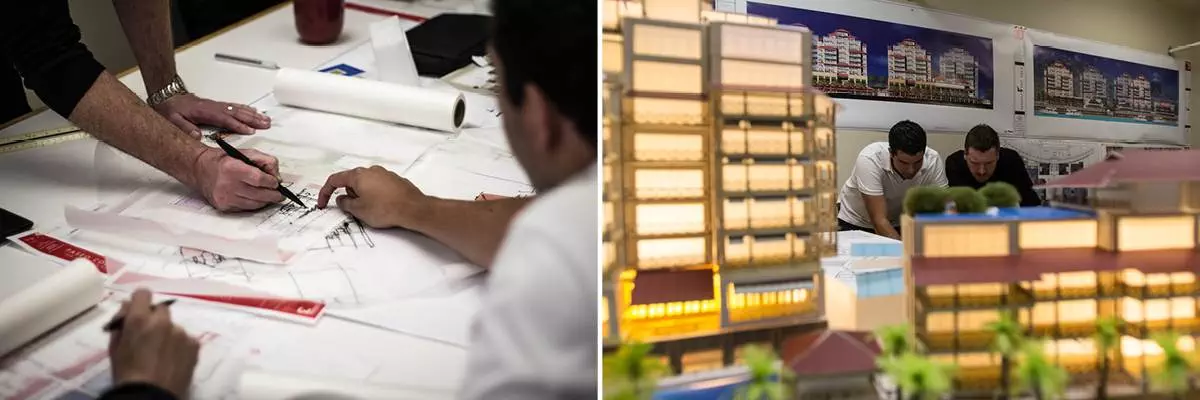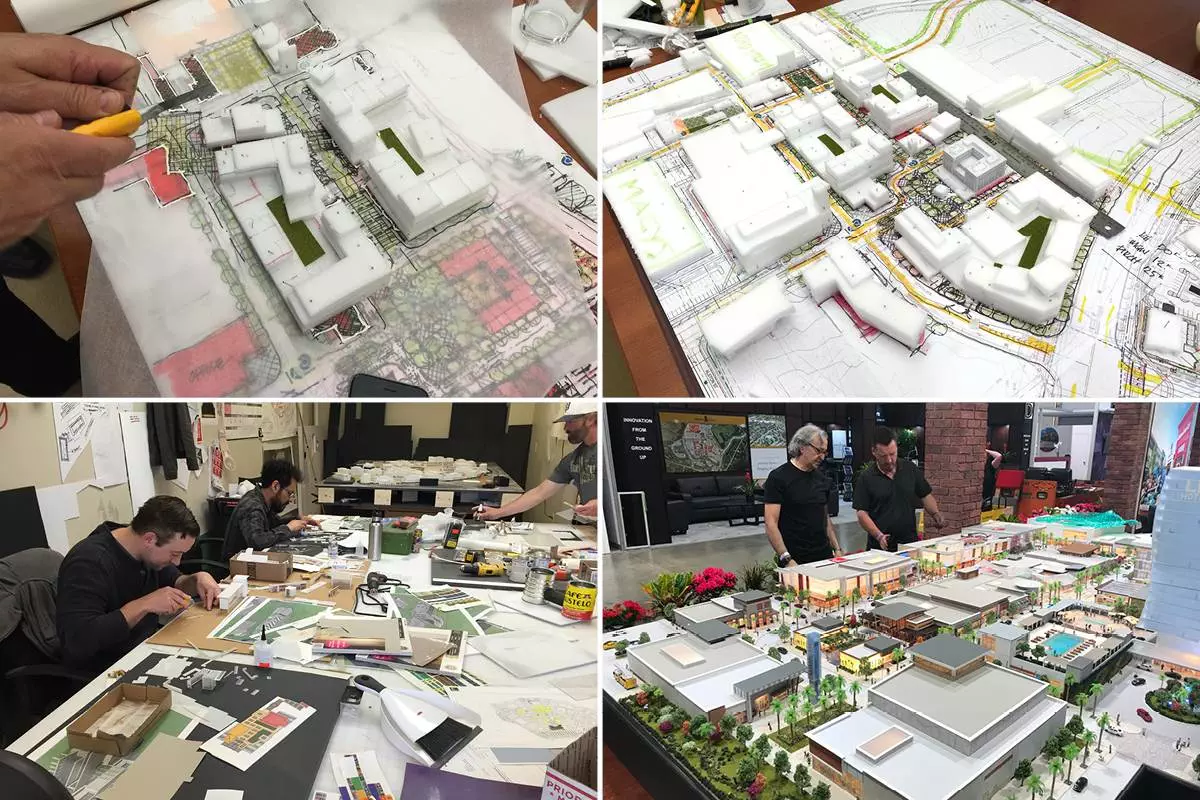Creative Chaos

Embracing the Traditional Art and Science of Design
A trio of accomplished designers with more than sixty years of award-winning architectural design experience, the three founding partners of Design 3 International (D3i) – Jim Baeck, Simon Sykes, and William Lopez – have worked on five continents and designed everything from spectacular mixed-use projects such as National Harbor in Washington, DC; to iconic American retail destinations such as Town Square in Las Vegas and Easton Town Center in Ohio, Internationally, they have designed residential resorts like Ocean Reef Club and Marina Pez Vela and dynamic entertainment-anchored concepts like Zonk’izizwe and Expo-Xplore in South Africa, and the Mall of Istanbul in Istanbul, to high-end resorts and residential communities like Vizcaya at Jinqiao in Shanghai, China. Their collective experience—particularly the unique blend of perspective, insight and architectural design fluency that comes from doing so many projects in so many different cultural contexts over the years—enables them to balance and satisfy the competing interests of developers, retailers, mixed-use tenants, residents and guests alike.
The D3i team shares a collective belief in the importance of traditional, tried and tested, design fundamentals: an approach that is made manifest in a design process that is unique within the industry. At a time when the industry’s move to exclusively digital design seems both inexorable and inevitable, the continuing success of the D3i “hands on” architectural design process provides a compelling counterpoint.
It is a process the three men have long characterized as a kind of “creative chaos”: a collaborative and interactive exchange of ideas—a true charrette—that includes all stakeholders in a project in an extended brainstorming session that can last anywhere from a few hours to a few days. It is the literal and figurative “rolling up of sleeves”: a place where the energy and artistry of the sketchpad and the foam-core model still hold real and tangible value.
Sykes explains that D3i’s uniquely interactive and engaged design process is a foundational element of that impressive track record: the men aren’t trying to make any kind of personal statement: it is simply “what’s best for the project.” Baeck adds that new technologies are exciting and can be a tremendous asset, but it’s important not to let data entry gets in the way of creativity, and to not lose sight of the fact that the tools and tech we use need to facilitate our work—not compromise it. “We need to use technology to enhance communication and to make things more efficient, not to limit design possibilities.”

The charrette exercise helps to preserve the essential humanity of the built environment—a characteristic that can sometimes get lost in virtual space.
Lopez says that the freedom and flexibility of a charrette can make those possibilities seem endless: “We pull out a roll of tracing paper and pens and you can see people get excited. We sketch out an idea and the client can start to visualize different options. They can begin to wrap their minds around what various design elements will mean for the project as a whole.”
The immediacy and intensity of the charrette process fosters the “real-time” design discussion and debate, and helps to distill what can be a months-long process of back-and-forth inefficiency down to a day or two of action-packed hands-on design. The inherently collaborative nature of the process ensures that everyone has ownership of the design.
As the contours of the design emerge out of this process of this creative “fusion”, and as the flurry of sketches, models and ideas begin to coalesce into a polished design concept, Sykes contends that there is an added benefit, as well: the personal interaction with the client is its own reward. The process helps the firm cultivate a high level of personal service, responsiveness and engagement with the client. He says it reinforces the fact that this is a service industry, and that trust and personal integrity are as important as design integrity.
Perhaps uniquely among the premier architectural design firms today, D3i still makes extensive use of hand-built models throughout the design process. “Models are as integral to our process as pencil and paper”, Lopez explains.

Baeck says that when working in three dimensions, there is simply no better way to articulate complex ideas and convey a true sense of spacing and massing to a client. The flexibility, interactivity and innovative potential of model-building is key—Lopez has seen clients literally sculpt and shape as they go, picking up a modeling knife and hacking at a model with “what-about-this!” enthusiasm.
Evidence of D3i’s artisan process has already manifested itself in the recent openings of several key retail and leisure-related projects, including Quito Airport, Portal Shopping, Mall Del Pacifico, EKO Park and Villa Regina Residential in Ecuador, The Boulevard, Escazu Village Tower, and the initial phase of Marina Pez Vela in Costa Rica and the Urban District expansion at Easton Town Center in the US.

The D3i’s home market of the US continues to prove an exciting prospect, full of opportunity, as do Central and South America, CIS countries, and Southeast Asia, which are witnessing the transformation of a number of their developing countries. The firm also sees continued work in Asia, currently master planning two major cities in Vietnam, and exploring opportunities in Europe and the Middle East.

The irony of this cutting-edge firm embracing “old-school” design techniques is not lost on D3i’s founders. Sykes, Baeck and Lopez firmly believe that the award-winning dynamism and creativity of their portfolio is a direct result of this unique approach; that achieving innovative results from a tactile process is not a contradiction, it is a correlation. And for the clients who look to D3i to deliver cohesive and inspired design solutions, it is a process that is not only timely, but timeless.

download this article as a pdf: Creative Chaos article
